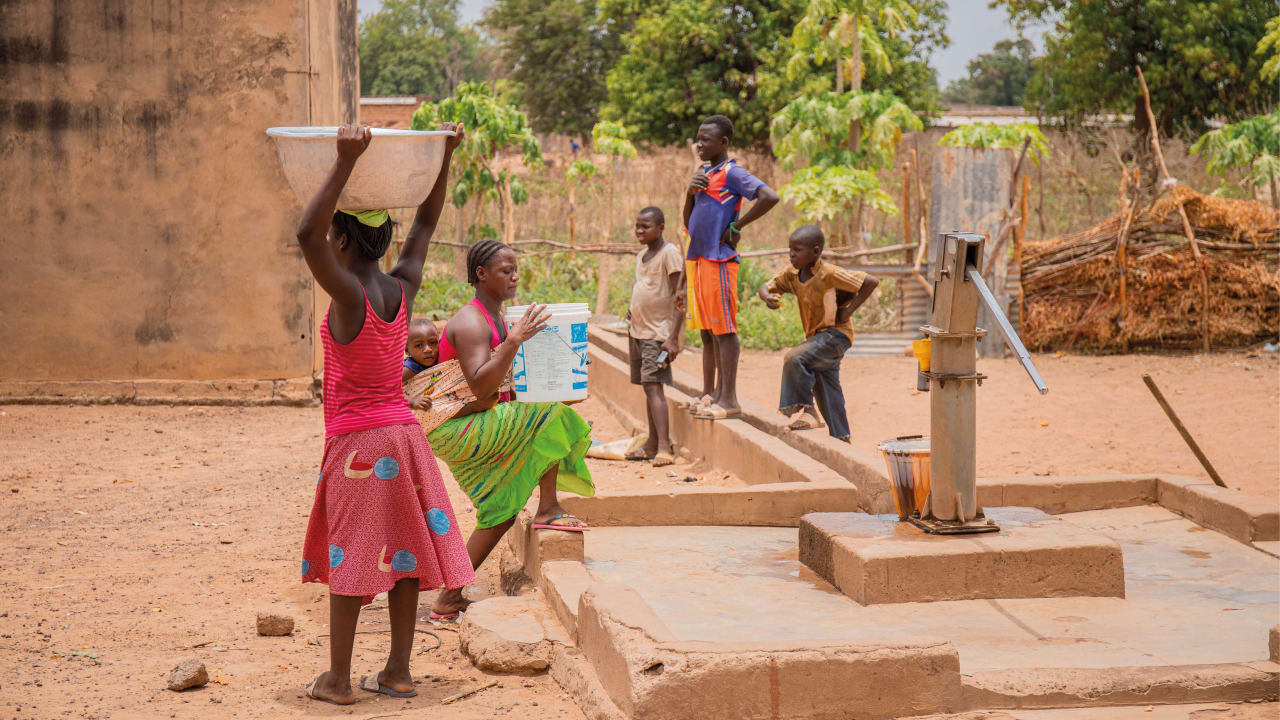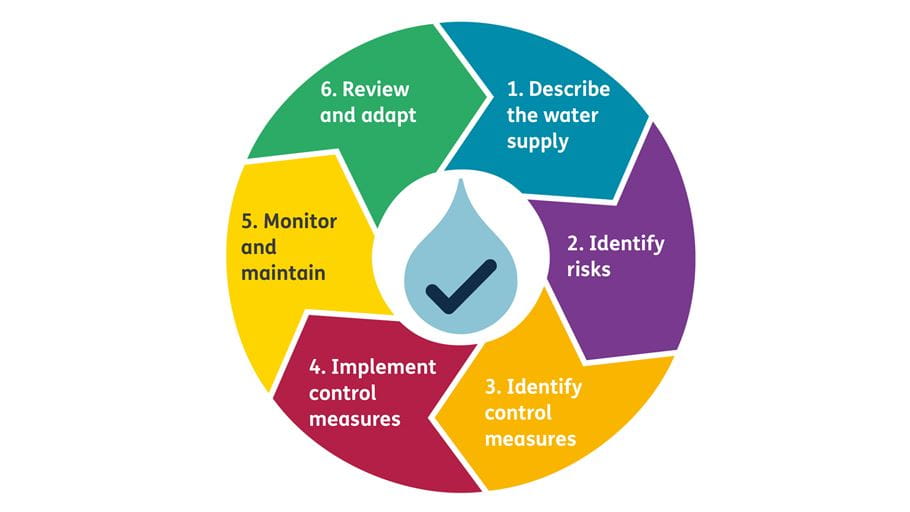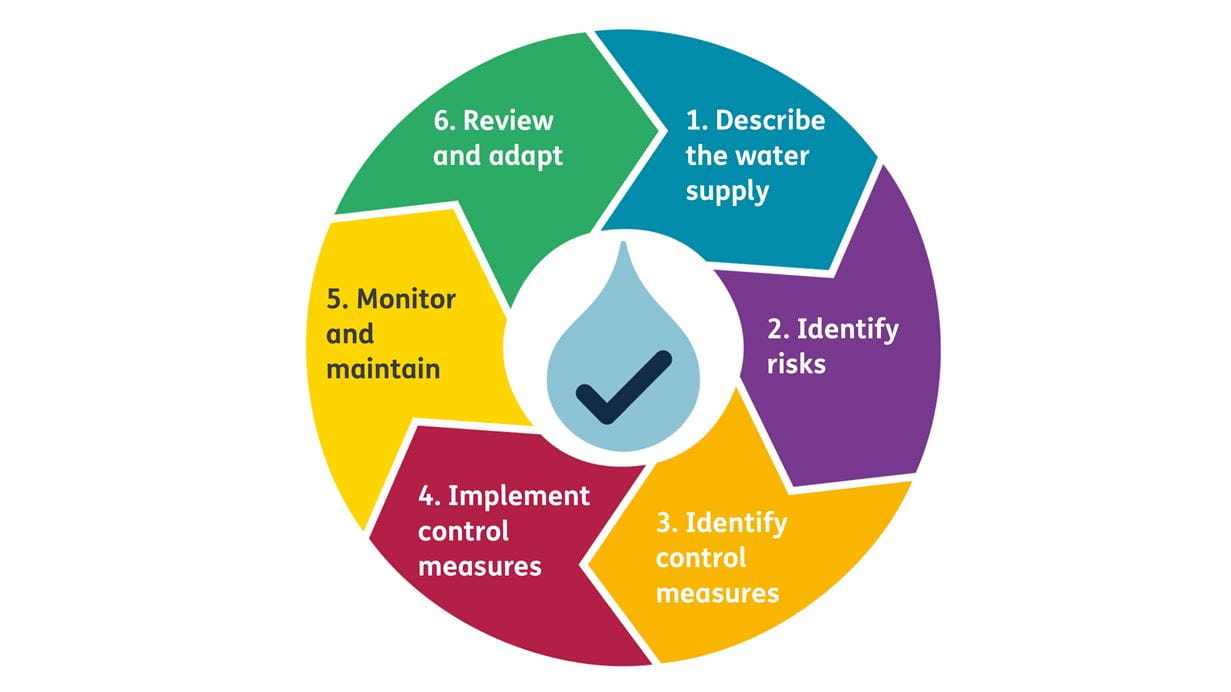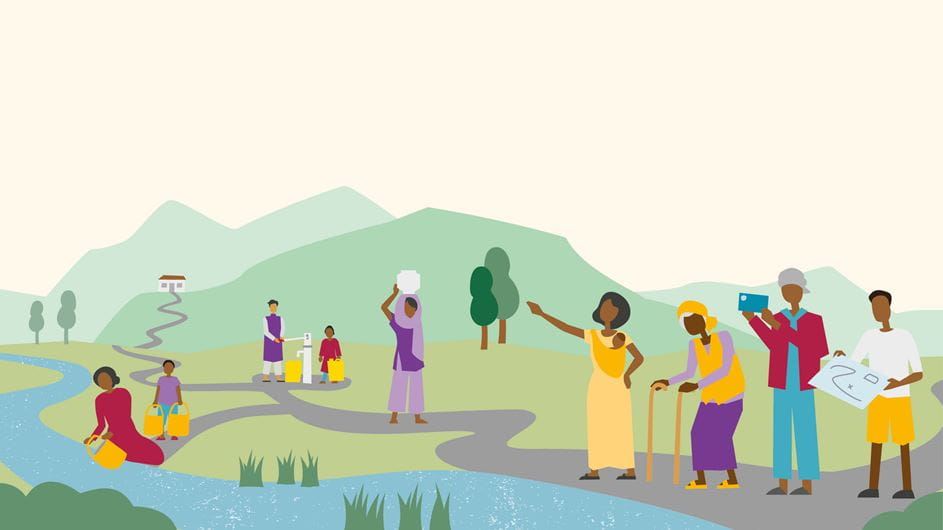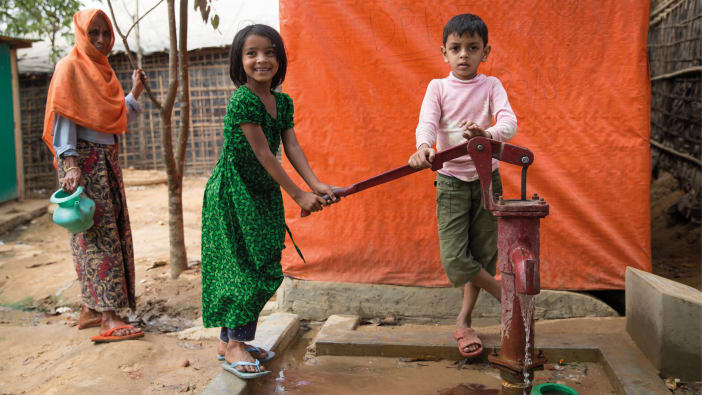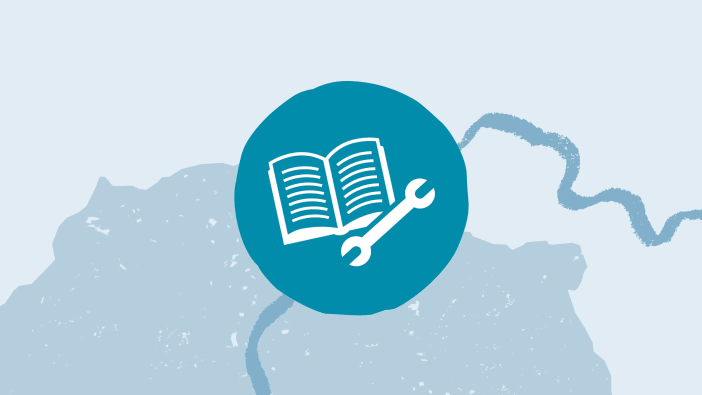Every drop of water that we drink travels from a catchment area (eg hills and forests), through a source (eg a spring) to the place where it is used (eg a home). This is called the water supply route.
Along the way it might be treated, stored, pumped, piped or carried in a container.
Contaminants that make water unsafe to drink, such as bacteria, viruses or harmful chemicals, can enter at any point along the water supply route.
Water safety plans
Testing can reveal if water is contaminated but it cannot identify where it happened. For example, well water may be tested and found to be safe, but if it is carried in a dirty container or left uncovered in the home, it may no longer be safe.
Water safety plans were launched by the World Health Organization in 2004 to help communities prevent contamination at any point in their water supply route.
A water safety plan identifies:
- risks to safe drinking-water supply and
- preventative measures that need to be put in place to stop contamination from occurring.
A water safety plan can be used for any type of water supply: rural or urban, new or existing.
The plan should be integrated into the day-to-day operation, management and maintenance of the water supply and should be regularly checked and revised to ensure that it remains effective and up to date. Regular water-quality tests can help to check if the plan is working.
Before developing a water safety plan, community members need to agree on targets, for example: ‘total days of diarrhoea in children under five will be no higher than three per month’. They can then work through each of the steps below with these targets in mind.


